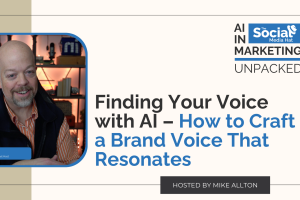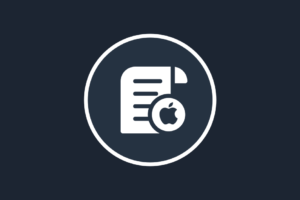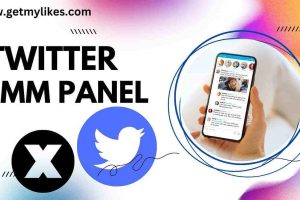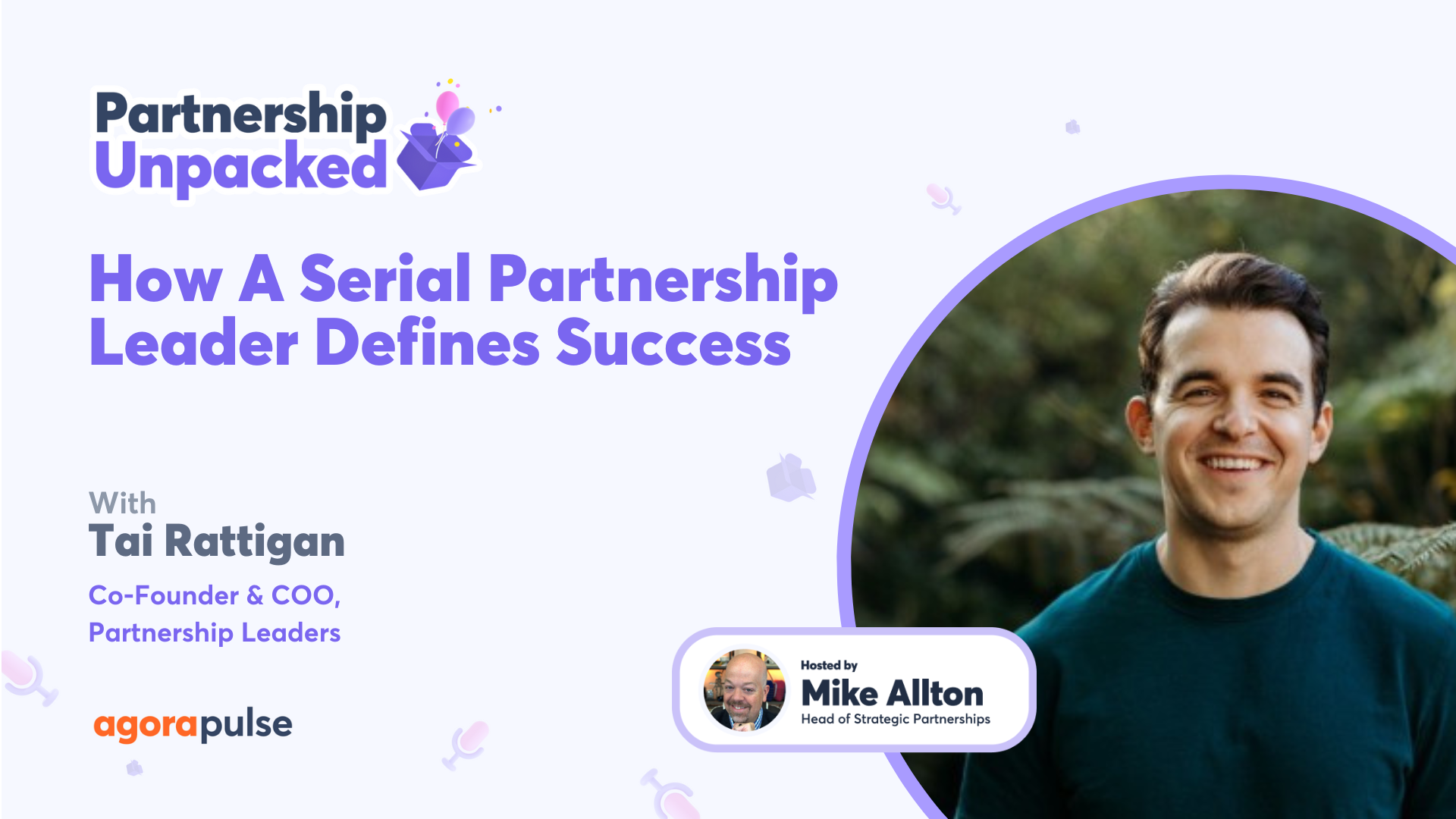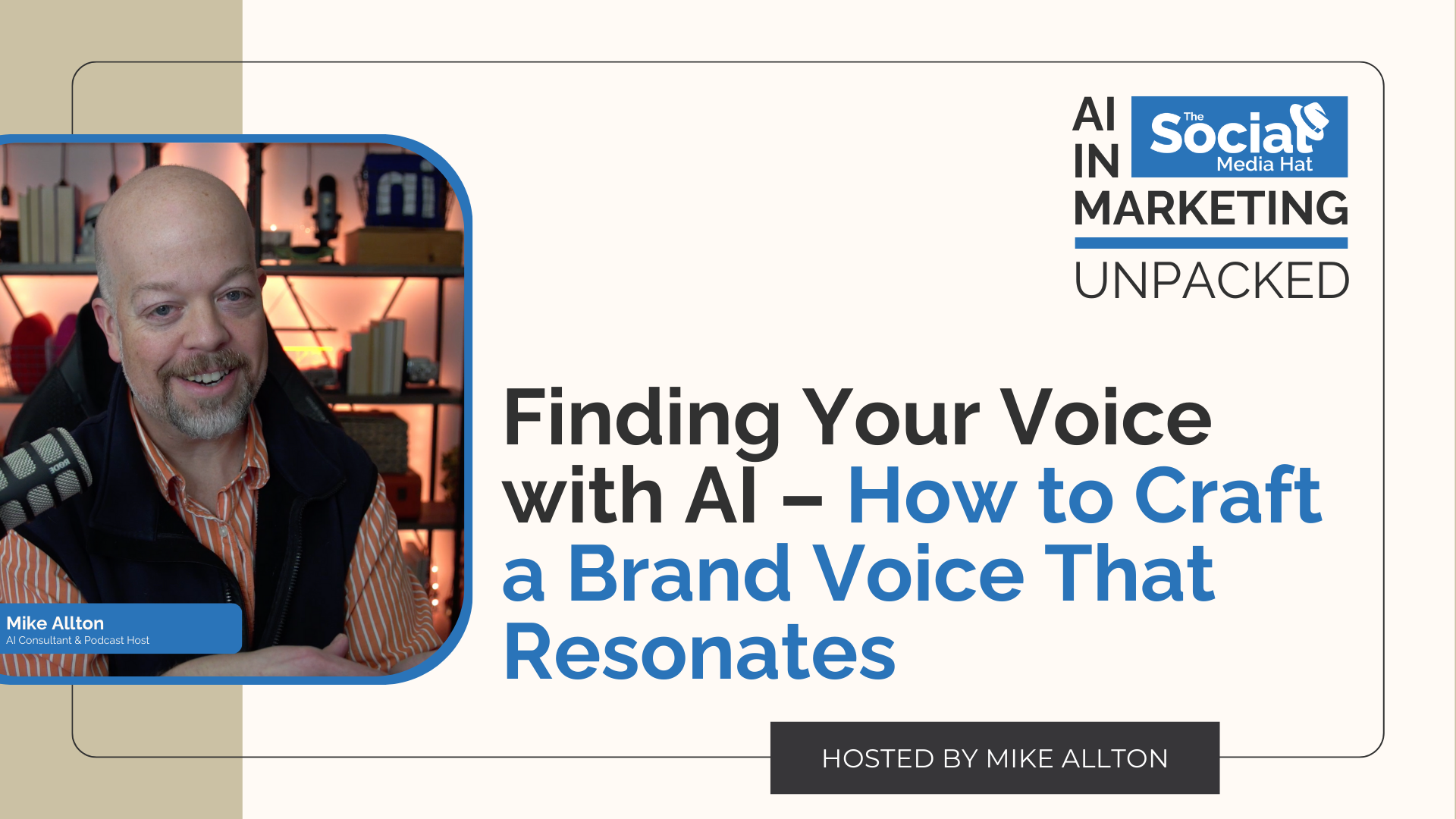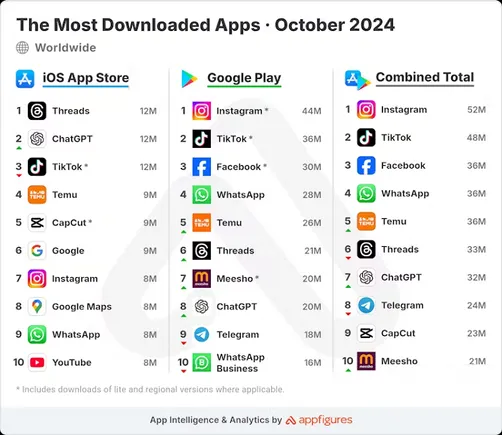Through the first three quarters of 2023 in the U.S., over 170,000 tech workers have been laid off.
Now, more than ever, it’s critical for partnership teams to be focused on the right initiatives and have plans in place to measure and demonstrate success.
How do we prioritize the right partners? Where are strategic partnerships headed in the coming years, and how do we define success?
That’s what we’re covering in today’s episode of Partnership Unpacked.
Welcome back to Partnership Unpacked, where I selfishly use this time to pick the brains of experts at strategic partnerships, channel programs, affiliates, influencer marketing, and relationship building… oh, and you get to learn too! Subscribe to learn how you can amplify your growth strategy – with a solid takeaway every episode from partnership experts in the industry.
And throughout this first season, one of the topics we’ve talked about often is how to find great partners and how to measure success, but typically from a B2B influencer partner point of view. Seldom from a B2B brand partner perspective.
That’s just one of the many reasons why I’ve invited Tai Rattigan to the studio.
Tai is a giant in the partnership space having built teams at Optimizely, Amplitude and Deel. And he’s co-founded an organization, Partnership Leaders, dedicated to providing partnership pros with a community and the resources they need to succeed, complete with an in-person event, Catalyst, that I can’t wait to attend.
Partnership Unpacked host Mike Allton talked to Tai Rattigan about:
♉️Prioritizing the right partners
♉️Measuring partnership success
♉️The future of strategic partnerships
Subscribe to the show calendar: agorapulse.com/calendar
Learn more about Tai Rattigan
Resources & Brands mentioned in this episode
Full Notes & Transcript:
(Lightly edited)
Mike Allton: Through the first three quarters of 2023 in the U. S., over 170, 000 tech workers have been laid off. Now, more than ever, it’s critical for partnership teams to be focused on the right initiatives and have plans in place to measure and demonstrate success. How do we prioritize the right partners? Where are strategic partnerships headed in the coming years?
And how do we define success? That’s what we’re covering in today’s episode of Partnership Unpacked.
This is Partnership Unpacked, your go to guide to growing your business through partnerships quickly. I’m your host, Mike Allton, and each episode unpacks the winning strategies and latest trends from influencer marketing to brand partnerships and ideas that you can apply to your own business to grow.
And now the rest of today’s episode.
Welcome back to Partnership Unpacked, where I selfishly use the time to pick the brains of experts at strategic partnerships, channel programs, affiliates, influencer marketing, relationship building. Oh, and you get to learn too. Subscribe, learn how you can amplify your growth strategy with a solid takeaway every episode from partnership experts.
The industry and throughout this first season, one of the topics we’ve talked about often is how to find great partners and how to measure success, but typically from AB two B influencer partner point of view, seldom from AB two B brand partner perspective. That’s just one of the many reasons why I’ve invited Tai Rattigan into the show.
Tai is a giant in the partnership space, having built teams that optimize the amplitude and deal, and he’s co-founded an organization. Partnership leaders dedicated to providing partnership pros with a community and their resources. They need to succeed, compete in an in person completely with an in person event catalyst that I can’t wait to attend next year.
Hey, Tai, welcome to the show.
Tai Rattigan: All right. Thank you so much for having me, Mike.
Mike Allton: My pleasure. Now, one of the things I love to do for folks is kind of help them set the stage and you’ve been a partnership professional for years across multiple brands. How did you get started in this space?
Tai Rattigan: So I started my career at American Express.
And I spent five years there working in various different teams across sales, account management, customer support, you name it. I even did a stint in fraud investigation, which was really, really enjoyable. Uh, and one of the things that at the time I didn’t really notice, but really thought about what in hindsight was.
Everything that American Express did was with partners, and so it was extremely rare that we were doing something that didn’t involve fraud investigation. We partnered closely with the police force. We partnered closely with, uh, you know, security companies. If we’re distributing cards, we’re partnering closely with mail companies.
If we’re entering new markets, we’re partnering closely with local banks. Like hotel benefits, airline benefits. It was just like a partnership business through and through. And we didn’t even call it that, uh, when I was working at American Express. And, but, you know, something that was like really instilled in me through that time that I was there.
And I got the chance to go to work in tech, which is something that I was always really excited about doing. I was, I grew up in the South of England and. My hometown now is a little bit of a tech hub, but at least when I was growing up, I didn’t really feel like there was much tech going on, uh, in Brighton in England.
Um, but I was always really into the tech space I participated in and ran online communities and all sorts of interesting stuff to try and stay plugged into that era and everything that was happening. And so, uh, I was. On one of these forums, I saw a role for a company called Optimizely. It was an SDR role.
I was kind of a fairly senior salesperson at American Express at this time, uh, earning really good money. And I saw this role and I was like, and it was in Amsterdam and I was living in Brighton. I said, Hey, I’m going to take it. And so I joined Optimizely and I think I was an SDR for about three weeks.
And, you know, straight away, I was like, it is really weird. that we’re doing everything by ourselves, you know, like where are all of the other companies, you know, it’s like, how come we, we just do everything by ourselves. Um, and at that same time, uh, we were getting, I would say probably 20 percent of our leads, uh, you know, I, I was an SDR.
So I was going through all of the leads, about 20 percent of our leads were digital agencies. And every time I got one of these leads, I would go on their website and I would see 30, 40, 50 customers on their website. And, you know, and I went to my boss and I was like, Hey, I know that we’re selling these folks like customers at the moment, but it feels like if we worked with them to sell to their customers, you know, rather than one customer, we could get 30 customers and they and Ford would probably pay us more money than this small digital agency.
And so. Naively, I thought that this was me inventing this thing and me and my boss kind of went on this journey of building out a, um, an initial partner program. And then, uh, you know, we built something, uh, alongside Dan Glaser, who is, uh, the person that ended up running the partner business in the U. S.
and the global partner business. Eventually built something at Optimizely that we kind of felt was like. Very original and special. And then like later I found out, Oh, like partnerships and channel and all of this stuff has been around for a really long time and there’s best practices and everything else.
So that’s how I kind of got into partnerships in the first place. I fell into it.
Mike Allton: You invented it. No, no, no. You invented partnerships. No, that’s fantastic. And I, and I think to give yourself a little grace in fact, there hasn’t been a dearth of information about. I was just talking to Franz Krebs in a previous episode, um, about his days at Hopin and out at StreamYard.
And when he was creating the agency program at Hopin, he felt like even though he knew it existed in his mind, he was aware he’s not inventing partnerships, but it wasn’t as though he had a lot of resources to turn to, to figure it out. He still felt like he had to figure it out. On his own. So I think that’s basically what you were saying, right?
You were basically just sorting it out on your own.
Tai Rattigan: That’s right. Yeah. At least it definitely felt that way. You know, the, the, what I did, how we got the partnership started at optimizely was I took a. I basically got a list of all of the agencies that had reached out to us in our database in the, and I started with the UK, uh, and I sent absolutely every single one of them an email, you know, just like a spam email.
Absolutely. Everyone’s saying, Hey. Like we’ve been working like this before. Are you open to working like this going forward? And I think 50 people replied to me and we’re like, yeah, fine. And included in those 50 people were like the CTO of publicists, you know, and like really big senior P and I was like this SDR optimizely and very, very quick, you know, I think we got our first referrals within.
Two weeks and within, within a month, it was like, okay, this is a person. And then it was, this is a team. And then this, it was, this is a department. And then, and it wasn’t until we started getting there, like to that sort of level that we encountered the Adobe partner program and like these other companies and like how they were structuring their partner program, which like you say, uh, it was just hard to find this stuff.
You know, like I, we didn’t optimize, he was like such a young startup and I was on an island in Amsterdam that I just didn’t have like a kind of network into the bigger, more established companies that were doing this stuff for a long time yet.
Mike Allton: Yeah. Yeah. And frankly, shout out to partnership leaders because you guys are one of the few organizations out there that are now creating great central locations, hubs, resources, communities around this idea of partnerships and all the different nuances and flavors.
I mean, you know, long time listeners of the show. No, we talk about a lot of different kinds of partnerships on this show, but they all kind of fall into that same umbrella. Right. Just curious. How long ago did you guys start partnership leaders?
Tai Rattigan: Almost five years ago. Yeah. So we’ve been working on it a while.
Mike Allton: Nice. Now, in all the roles that you’ve had, you know, optimizely and amplitude deal and so on, what would you say has been your most successful partnership to date and what made it so successful?
Tai Rattigan: Well, yeah, that’s a big question. Uh, so. I’ll, I’ll, I’ll talk about one and then who knows, we might end up having to talk about an a few others.
Uh, so I don’t wanna leave anyone out. I might get in trouble because I have had the fortunate experience of building a ton of very great partnerships that have performed really well, and also have established lifelong friendships with people. So I wouldn’t wanna throw any of my friends under the bus. I would say, uh.
One that I was particularly proud of was the partnership we built with a company called AB180 in Korea when I was based at Amplitude. Uh, and so, you know, Amplitude at the time, small 10 million in revenue, uh, company. I was the only partnerships person. Um, we were just based in the U S we, we, we were in the process of sending someone out to Europe to be our, to open our European presence.
And, but, you know, like very early stages and someone had reached out to us and basically said, Hey, like, I think your product’s really cool and I’d love to resell it in Korea. And we ended up going on this crazy journey of. Going all around Asia, meeting different potential partners, building out a whole reseller program, you know, like running trainings and enablement and all of this stuff for all of these folks, um, for a really long time, uh, and not being sure is this even the right approach.
And eventually we got to a place where that 180, you know, they, they had. They were running the equivalent of our conferences in their market and they were getting thousands of people attending the conferences, you know, that we were generating millions of dollars in revenue through them. They had their own website that represented Amplitude in the local language in the market.
Marketers, salespeople, customer success people, the full thing. It was, it was like, it was like amplitude was there in Korea, uh, but it was just through our partner. And so that one was, uh, particularly, uh, particularly proud one for me, because I think those are the most complex partnerships, you know, it’s, it’s like setting up, um, Referral partnerships or, you know, kind of ISV tech partnerships where it’s like, we’ll give you a few, you give us a few and like scaling that is still challenging.
Um, but it’s, uh, you know, like it’s kind of intuitive, whereas setting up something like we did in Korea or, and we went on to do an even bigger one in Japan and like other markets, it was like really something special, uh, and had a really meaningful impact on the business. Uh, you know, at that time we, like I say, we were at like 10 million, uh, ARR and we were able to generate.
You know, get like half a million ARR from one partner in Korea, uh, like within the first 18 months or something, it was really something impressive.
Mike Allton: Okay. This is why I like to say that I picked the brains at experts. Cause yeah, we’re going to, we’re going to pull this apart a little bit, cause I need to know how this worked.
Uh, at Agorapulse we’re like, I don’t know, 15, 20 million ARR or something like that, so we’re not too dissimilar and. Very similar situation. I’ve been approached by an agency in South Africa that would like to do something for us similarly in the South African market, which, okay, no surprise. We’re not big in South Africa at the moment.
So I’m like, okay, this is really interesting. Did you have Korean translation in your product or were you just selling it in your normal English based package?
Tai Rattigan: Yeah. So the, the whole thing for me, I ended up going back and doing a ton of probably overanalyzed. This is like a recurring theme for me, you know, it’s like I probably overanalyzed and over modeled out the whole thing, you know, um, and the, the, the justification for building these resellers was like, Hey, we need to know that this is a market that is big enough for us.
That it justifies putting in the amount of time and effort that it will take to get these people up and running because it is not dissimilar to hiring people, you know, like you don’t have to do the HR and benefit stuff and you don’t have to pay them every month, but like the amount of enablement and support they need, it’s probably higher than a full time employee because like.
They, they kind of learn by osmosis, whereas your resellers like aren’t plugged into your internal comms or whatever in the same way. So you have to be able to justify that the market is. sizeable enough that it makes sense to invest in this partner. You then have to also justify like that, uh, you shouldn’t just go into that market yourself, right?
Uh, cause like that might also be easier. Uh, and so for us, it was like, okay, we don’t want to translate the product into Korean, uh, because it is a really complex product already. And our product team needs to work on building new features and functionality, not maintaining that what we’ve already got in another market.
You know, in another language or, you know, like there’s a, it’s not just the language. It’s like a lot of contextual design, uh, decisions as well. Um, and so that was like, number two is, you know, okay. The market’s big enough in Korea. Also the complexity is that we don’t want to do, do it ourselves. Great. All these people, the right people for us to work together with, you know, and that last one was the trickiest one where you had to go out and you had to meet people in person and, you know, countless times.
The profile, at least that I found in the end was these kind of smaller, scrappy, agile people that are You know, they’ve got the right instincts and like they sniff an opportunity and they want to bring it out into the market. We tried to set up similar partnerships with big enterprise players or, you know, established resellers who resell hundreds of products, you know, and have armies of salespeople and none of that other stuff works, it was always like the.
3, 10, 20 person shops. Maybe they had like their own products on the side already, you know, that were kind of like hustlers that ended up working for us. Um, but that’s like, I could go into each of those three buckets in like what our model and criteria were for them. Cause I, like I say, I like over engineered the whole thing, but that’s kind of how we decided at least.
Was this a smart move?
Mike Allton: I love it. That’s such smart advice. And I can see a trip to Johannesburg now in my future. So thanks for that. But let’s talk about working, uh, with the right partners. How do you figure that out? How do you determine who the right partners are? Um, maybe how to find them. And do you think you should prioritize them?
Tai Rattigan: Yeah. Yeah. Um, good, good questions. Uh, so do I think we should prioritize them? Definitely. It’s really important. I think focus for partnership teams is probably the biggest challenge, you know, focusing on the right goals, focusing on the right inputs to drive those goals, uh, focusing on the right partners to allocate those inputs to like prioritization is really important there, uh, because at least my experience and this might be different for you, but my experience is when I spend time with partner managers.
80 percent of their time is spent on internal helping other people in the organization now, or like trying to triage this problem or that problem, or like working on a one pager to explain what they do or all of this kind of stuff. And their, their, their partner engagement is like their after hours side hustle.
You know, it’s like maybe they do it in, uh, in the, they’ll set up a. Email in the evenings to send to all of their partners, or they’ll take calls when they can, but like almost everything is like internal stuff. And so if you start prioritizing your partners and saying, Hey, I think these five to 10 partners are the ones that are going to really move the needle for me over the next three to six months, and I’m going to allocate.
70 percent of my time to those partners and like try and calendar that out as much as you can. And then like another 20 percent of my time, I’m going to spend on the other 30, 50 partners that I have in my portfolio, you know, and then that last 10 percent of my time, like four hours a week, I’m going to spend on internal stuff.
And if, and I’m going to do a calendar audit every quarter and look back and. Be really frank with myself and say, how much time did I spend on that internal stuff? Because that’s like the, that’s like the regulatory blob that you want. You have to just get away from, right? Like, uh, in partnerships. So I think prioritizing partners is really important from that perspective.
Like the, you want to, like, basically to ensure that you’re adding value to partners. Right. And the question I’ll ask. Partner managers that are on my team is like, if you look back at the work that you did for this partner, this quarter, would they say, wow, I really noticed the difference, you know, like it would, would they say, wow, they really stepped it out this quarter, you know, or would they just not have noticed.
And, and the reality is most of the time it’s like you showed up for a checking call and, you know, like you kind of tick some of the boxes and, but you just didn’t have the time and the capacity to really add value to the partners and move the needle. So I think prioritization is extremely important, uh, for that reason.
And like. That’s how people end up winning because the partners experience that value and they’re loyal because of it. Um, you know, you, the questions before that around like finding the right partners, that is really tricky to be honest. Like, I’ve got some really hacky tips for how I found mine, you know, like number one, uh, Going and asking my existing partners who they partner with, like who their best partners are and asking for introductions is like a really straightforward one that is a winner, uh, because you find a bunch of companies that are already productive and already know how to partner.
Uh, you know, and like, especially if you’re the people that are making the introduction is like a complimentary one, like especially for international resellers. Like if you can find a really complimentary technology partner to yours and say, Hey, Who, who are your people in South Africa? You know, like, and, and let’s go and double the revenue that they’re generating with the same level of work, because they can sell our products and your products now, and they’re going to double their revenue and it’s still the same customer, you know, like, wouldn’t that be a massive value add to that partner, you know, so asking your existing partners for intros is great.
Uh, the other one is. Getting in your CRM and looking at like, who are all of the third party email domains inside your customer accounts. So like running a report of like any email address that doesn’t match the domain email address of the company that owns that account. And you basically get like all of the consultants and agencies and everything that work inside your customer accounts.
And so you can get like a pretty nice list there as well. And then, you know, and that, that, that’s probably like. 90 percent of it. And then I would say the rest of it is like going and speaking to your internal team and saying like, who are the people that come up? Like who are the, and now you can use Gong or chorus or whatever is your tool of choice.
Uh, but like now you can like search and, and every single customer call is there and you can be like, Oh, whenever someone says CRM. They also say this company, you know, it’s like, okay, that’s probably our partner. You know, like we probably need to go and work with them because like the customer requires us.
To work with that company. So there’s probably something there, you know There’s obviously the other ones like if a company’s knocking down your door and they’re bigger than you and they want to work with you Then it’s probably you should probably You know, uh that does happen that happened to us at amplitude with aws aws like outbounded us and like hey We want to partner with you and we’re like, okay, we’ll do that.
They weren’t on our list, but we went along with it um, but yeah, uh, that’s how I would think about like Finding the partners and also prioritizing the partners. And then there was a question in the middle of those two that you have to remind me of.
Mike Allton: No, I think that was fantastic. I particularly related to your points about prioritizing partners.
It’s very similar to a point that actually France was making in that earlier episode about starting small with your programs because the larger issue with both of your points is that we can’t service an unlimited number. Of partners, particularly when you’re a lone ranger like myself, I can’t work, I just don’t have the capacity to work with hundreds of partners.
I’ve got to find a way to approach them on a more hands on basis. So either starting small or at least prioritizing. If I do have a lot, like I’ve got, you know, 50 ambassadors, uh, you know, these are influencer partners of ours obviously can’t treat them all and give them all the same exact amount of time.
So prioritizing those identifying those that are the greatest potential. Makes a lot of sense to me when it comes to determining what that potential might be. Now we’re talking about measuring success. So how do you measure success in partnerships? And what do you think are some of the most important KP eyes?
Tai Rattigan: Yeah, the My, my operating theory on this, and you know, this is going to evolve over time. I’ve made lots of mistakes, uh, in the last like 12 plus years in partnerships is, you know, you have to navigate towards the metric that the company cares about and how, and that you can have the largest amount of impact on, you know, and that could be a bunch of different things.
And it is different things for different businesses. All of the ones I’ve worked in, it’s been. Additional revenue, you know, like, uh, for a little while, optimizely later on that we had a retention issue and there was definitely a priority to leverage partners to increase our attention. And we did, and it really worked.
Uh, but like for, I would say 90 percent of my partnerships career, it has been, how do we generate more sourced partner revenue, you know, the challenge with that, so there’s a bunch of pros I’ll start with the pros of why that is, you know, it makes your life very easy. If you’re sourcing net new revenue for the business for explaining what your team does.
If someone wants to do, we source revenue for the company and people are like, okay, like, how does that work? We work with these companies and they introduce us to their customers. Okay, great. Like, not that complex, you know, it’s also really, it makes life really easy when you’re trying to get headcount, you know, like, it’s like, Hey, I’ll sign up for.
1. 5 million in sourced closed one revenue when I take on this person, then the finance team is like, great. How many of them do you want? You know, three of them, you know, uh, and so it makes like a resource allocation and everything super easy as well. You know, I think it does also create swim lanes, uh, like with.
The sales team and the marketing team and whatever else where it like, just provides some transparency around like, okay, this is our swim lane. Like, whereas like some of the influence or attached stuff, it can kind of get messy, uh, with the marketing team or with the success team or the sales team. Um, and then, uh, you know, what else I really like about it is like.
It’s just, it’s easy to track, you know, cause attribution in partnerships is so challenging. Uh, and so keeping something simple like that, where it’s like either the partner sent us an email introducing us to the customer, or they filled out this form introducing us to the customer and that is how we get credit for it, you know, and that’s how we’re compensated.
And so that then the, like the attribute, that whole attribution challenge, which you can just spend. trying to solve. And I haven’t encountered anyone that solved it yet. Um, kind of goes away. So I love sourced revenue for those reasons. Also, I think at this time, everyone’s trying to generate more revenue, you know?
So like on the team, that’s like just a hundred percent signed up for doing that. It’s like a positive, it sounds good to the CEO. The CFO, the board, like the people that are really making the decision whether you should be around or not. So it’s like a, it’s like a bulletproof jacket for your like role in the business, you know, um, there are a ton of cons as well, you know, because it ultimately your team is, Oh, sorry.
One more pro, and this is a really big one going back to focus and prioritization. It makes it really easy to say no to people in the business. When, if like, if the product seems like, Hey. We’re doing this thing and we need partners for X, Y, Z. And you’re like, Hey, it sounds amazing. And we’ll be happy to do it.
But our priority is generating sourced revenue. And it doesn’t, it doesn’t, that doesn’t fit into our strategy for source revenue for this quarter. Same thing with a bunch of other teams, you know, and you, so you can kind of like repel some of that. Blob, the creep, the organizational creep where you like, you know, your partner managers don’t need to join the product team’s weekly meeting, you know, or like all of these things, , their ability to be able to have impact on the business.
So I, I love that as well. But as I said, there are tons of cons, you know. The reality is it captures a very small percentage of the actual work that the partnerships team’s doing, you know? Um, and so like, I think that that can be frustrating for partner managers sometimes because, you know, they’ll work on something that is, is influenced and it takes a ton of.
And it’s really important for the business that you close that big enterprise deal that the partner didn’t source, but the partner manager doesn’t get paid for it, you know? And so, so that’s, that’s a challenge. Also, you know, you do want to be able to work with the product team so that they’re going to build integrations or they’re going to factor partner products into the roadmap because your partners care about those and that’s how you give value back to your partners, you know, and so you do have to like build in a bunch of these.
Health metrics outside of that top line metric, like for us, one of the, when I was, uh, uh, you know, building this team a deal and deal was like a 40 partner manager, you know, like very large, uh, ARR partner business. Um, you know, the, uh, the, one of the health metrics that we had on the team was how many referrals are we sending to partners?
And we tracked that really closely. And, you know, we were, we had people on the team whose full time job it was to generate referrals for partners. Like we actually had three people, a whole team pretty much, who were just building out things that would send referrals to partners. We built in a ton of incentives for our sales team, success team, everything to be sending referrals to partner.
We’re talking like hundreds, maybe even thousands of referrals, a quarter out to our partners built like a real machine around it. But all under the assumption that generating all of that value for our partners and helping them grow their businesses would generate more additional revenue for us. And so like the top line metric was still, Hey, we’re generating additional revenue for the business.
Mike Allton: Nodding my head up and down violently the entire time you’re talking, particularly when you’re focusing on the need to have your partnership department focus on a revenue that aligns with the company’s number one revenue, which to your point is typically going to be Uh, that’s exactly what we’re doing here to AgoraPulse.
I’m implementing near bond and co selling as we speak. That’s going to be an ongoing topic on this show. Cause y’all listening right now, you get to come along to this journey with me. And that’s the number one reason is that I can provide actual and my partners can provide measurable. value to the company.
And there’ll be no question. What do you do? Oh, we’re, we’re adding revenue to the company. Yes. So we’re using partnerships as a channel to do that. If you want to hear about another channel you could be using in your own company. Here’s Darryl Praill, our CMO at Agorapulse.
Darryl Praill: It’s the Arc de Triomphe. Can you imagine if you’re in charge, if you’re the CMO of marketing Paris, what are your main channels?
The Arc de Triomphe. There’s the Eiffel Tower. There’s the Louvre. Those are your channels you’re going to use to drive tourism dollars in. Okay, now, but you’re not the CMO of Paris. In fact, you’re the CMO of your company, product, service. So what are your main channels? Well, I’m going to guess they’re things like pay per click, maybe trade shows events, maybe content.
Those are all pretty predictable, right? Let me ask you this question. Are you treating social media as a main channel? By the way, only 1. 8 percent of you today measure social media and can prove an ROI in that investment. HubSpot and Gartner say social media is the number one channel to invest in this year.
Are you doing it? If not, I can tell you why. You’re not doing it because you don’t have the tools, you don’t have the mentality. And that’s okay. We’ve got you covered. You change the mentality, we’ll give you the tool. tracks all the R. O. I for you. One place to manage all your social media activity. Your number one channel.
Change your success. Treat social media as the channel. One CMO to another. My name is Darryl. I’m with Agorapulse. I’ll talk to you soon.
Mike Allton: Alright Tai, this is, this is fascinating. I’m loving all these points. You’re making these, these pearls of wisdom you’re dropping, but I also want to be a bit balanced. I mean, you’ve got major companies like AWS knocking down your door, wanting to partner with you. What about some partnerships that have gone wrong?
You don’t have to name names, but I’m thinking about some of the partnerships in your past that didn’t work out. What might you have done differently? Yeah.
Tai Rattigan: I mean, the, uh, optimizely and amplitude, we worked with a lot of agencies. And boutique agencies were definitely our best partners, you know, like again, five, 10 person digital agencies hustling, uh, that like, and so that worked really, really well for us.
It was also an area where we had the most failure rate because it was really difficult for us to tell who was going to be a good partner and who wasn’t. You know, the, the reality is that a ton of these companies just don’t have a similar DNA. like the, um, and, and like the mistake that we made was assuming that they did like the mistake that we made was that these companies wanted to make more money, you know, and that sounds ridiculous, right.
Or at least like, uh, they had the instincts to like sniff out that there was more money to be made. Uh, and actually a lot of people, even the CEOs that were running these businesses, they just like, they love the work, you know, and they love. Adding value to their customers and making them successful and everything else.
And they were very appreciative that they got to get paid to do that, you know, but I, I was in an environment where it’s like, Hey, we’re trying to like five X our company this year, you know, like, or like 10 X our company this year. And they were in an environment where they were like, Oh, if we can pick up another customer this year, it’d be great.
Like we lost one if we can pick up another one. You know, and so I think we, you know, we definitely struggled with finding companies that had a similar DNA or is like, Oh, they want, they want to go out and grow. You know, they want to get. Five new customers, 10 new customers, 50 new customers, you know, and like they, they’re really ambitious and rather than spending your time kind of trying to drag along every person that says that they’re interested and says that they want to do it, you have to find the people that will actually like.
Demonstrate that appetite for growth, because the reality is that if you’re a partnerships business and your, uh, You know, like you’re, you’re trying to do any sort of scale depending on your, uh, deal size, but like, you’re going to need to be able to do, you know, 50 referred opportunities a quarter or something to like get to any sort of reasonable scale, like a deal we would do in hundreds of referred opportunities from partners, a quarter, um, you know, and Yeah.
Uh, if, if you’re working with partners that are only trying to add one, two, three customers a year, and maybe like only one in five of those customers are a good fit for what you do, you know, or like the timing is right or whatever else, it’s like you might get a referral every other year from a company that seems like a fantastic fit, but they just don’t have that like, uh, appetite for growth.
That you do. And so sniffing that out and finding those people like I was mentioning with the resellers where you just find these people that have like tenacity and hunger to grow and like really want to be able to plant this like a flag in the ground on something new. Uh, that, that’s like something I learned later, you know?
And I wish I would have learned it earlier. I still met a ton of great people and had lots of great relationships and things like that, but. spun a bunch of wheels and wasted time with people that just didn’t want the same things that we did. Uh, and so I could, I could probably tell you a hundred companies that we tried to partner with that fall into that bucket, to be honest, maybe more.
Uh, so yeah, there was a lot of that. Um, what else, you know, I think, uh, on the really big strategic relationships where, you know, I’ve worked on partnerships with Accenture, Deloitte, uh, slalom AWS, like you name it, you know, um, being, uh, being impatient with results, you know, you can be impatient with progress, right?
But you shouldn’t be impatient with results and like, not necessarily setting the expectations well internally about what the results we can expect or being realistic about those results internally as well. Like the, um, the partnership with AWS amplitude is Great. Now they have like really cool, uh, joint products and, you know, uh, doing great go to market and all of this kind of stuff.
Like Mariam on my team at Amplitude worked on that relationship for at least a year. And, uh, you know, me and other leaders in the business were like, Hey, what’s going on? Like, why isn’t this working? You know, we’re putting unnecessary pressure on her when actually just like our expectations were unrealistically set.
And I think like. Many partnerships get torpedoed because either you’re being impatient with results or you have just incorrect expectations. Um, and then the last one I would say, and this is a big one and I can talk about this probably, uh, cause this is like a personal mistake, um, was when I was working at Amplitude, uh, Snowflake were smaller, uh, you know, they, now they’re obviously a massive company, but they, they weren’t that big.
It’s bigger than us. Uh, and they really wanted to partner with us and I couldn’t really wrap my head around why they wanted to partner with us. I figured it was similar to how AWS wanted to partner with us. And it’s like, okay, you want us to adopt your product more so that we’ll pay you more money. And in turn, like we’ll get some partner benefits around it.
Uh, and like with AWS, that made sense because they were big enough that those benefits were. gonna mean something for us. But at the time, Snowflake, I was like, it just doesn’t make sense to me. So I’m not going to bother with it with it. Right. And they did an amazing job of kind of circumventing me and the partnerships team and working directly with the engineering and data teams and building a partnership.
And, you know, just this year, Snowflake, um, featured Amplitude really heavily at their conference. And, you know, they have an amazing, really productive partnership. They’ve built this Extremely cool product amplitude has on the top of snowflake, which is like a, you know, a real competitive edge and like a fundamental piece of their strategy.
You know, it’s a really amazing, amazing partnership and we could have. I would have done that a lot sooner if I wouldn’t have been so pigheaded around what I thought was it, you know, and so like, hey, there’s a company that really wants to partner with us. They’re a bit bigger than us. I don’t understand why, but like, let me indulge my curiosity a little bit rather than just saying no.
Because I don’t understand. It wasn’t like, Oh, I understand it and it’s not a good idea. It was like, I don’t understand it. And because of that, it seems like too much hard work. And so I’m not going to explore it. And ultimately I was really wrong on that. And so I’m very pleased. I can’t remember the person’s name, who is the counterpart of Snowflake that kept on chasing for things down.
And I’m very pleased for Dan Steven and the folks at Amplitude who picked that partnership up later and like have done a really good job with it. Because that would have been a. black mark on my career if someone else, uh, would have ended up picking up that partnership with snowflake instead. Um, but yeah, that was one where I definitely made a mistake.
Mike Allton: So much great wisdom and all that. Thank you for sharing those, those cautionary tales, particularly I related heavily to the need to have patience. Um, And we’re gonna touch base on this in a second as to why, but that’s just so core both ourselves. We’ve got to have the patients. That’s almost true to your final point to you needed to give yourself the patience to learn more about that potential partner, right?
Which is challenging because we often don’t have a lot of time in our roles. And so carving out the time to learn about another company. And we probably get requests to partner on a daily basis. And a lot of times it’s really obvious as to why that’s not going to be a good fit, but yeah, sometimes it’s not so obvious and we need to take that time now.
It does feel like in strategic partnerships, we’re having a bit of a moment right now. Alan Adler referred to it as an inflection point in the industry due to technology. He was saying, would you agree with that? And where do you see partnerships evolving in the coming years?
Tai Rattigan: Yeah, I do think that this is the partnerships moment, uh, or at least like the one In the time that I’ve been around, uh, you know, there’s a, there’s a few factors that go into that.
I think the first one is macroeconomic, you know, um, money was basically free until very recently. And so startups could run a business, uh, by buying customers and losing money and you can’t do that anymore. And as people inspect their businesses, they’re saying, Oh, well, like 30, 40 percent of our revenue comes from this.
Partner team and it’s only got two people on it and the close rates on these deals are 60 percent and they close way faster and higher dollar values and What is not to love about this, you know, it’s like And people just inspect it more and more and more and they’re like, wow, we need more of this stuff You know, whatever’s going on here.
We need a ton of it, you know And I think a lot of companies have done we talked about layoffs and everything else at the start of the show Like a lot of companies have done Layoffs and partner teams have been hit by that. And I think ultimately, that’s going to be a massive mistake. And the companies that have done those are going to have set themselves back, to be honest, because it’s such a critical, uh, competitive advantage for businesses.
But the macroeconomic shift for smart companies. Uh, has really driven a change in the investment, uh, in the partnerships team, you know, I was, I was working at deal deal was doing fantastically well, you know, and still is, uh, and even still the CEO was like, Hey, you know, we’re getting a lot of really good business from these partners.
You know, and the, and the cost to acquire a customer is like a tenth of what it is. The marketing business, which is also an amazing business, you know, but like it’s a 10th of the cost and we’re trying to get profitable. Can we, can we generate expansion revenue from partners as well? Can we do this from partners as well?
And I was like, Oh, it’s funny you say that. Cause like, we’ve just been focusing on sourced revenue, only source net new revenue. But like, if you want us to do expansion as well. And in my mind, I’m like, I know partners can do expansion, product retention, like all of the other things that we need to hit, but the like companies like CEOs, CFOs, they’re really recognizing that there’s this extremely productive part of their business.
It might not be the primary contributor of revenue, but it’s like a very, very profitable, productive part of the business. And they. Know that they need more of that. So I think that that is one component, uh, which is really, really key. I also think that, like, there is this, uh, Positive feedback loop of people getting partner wins on the board, you know, and they’re just like the, the hits keep on hitting, you know, and you’re seeing it like it, it seems like every other week, there is a really cool press release or partnership announcement.
And these are things that are like. At the executive level being decided between businesses and obviously they’re working or, you know, and like there is this positive feedback loop that’s happening. I think I don’t know what started it. I think Microsoft has definitely had something to do with it. Satya Nadella is really out in the market as someone who’s like partner first, you know, and he’s been advocating on behalf of his partners.
He’s been partnering with all of his competitors, you know, it’s like. Uh, he’s really figured that thing out. But, you know, you can’t, you can’t miss, uh, like a partner in announcement now. The, like the mo they, they’re just the wind keep on coming. Uh, you know, and then I think the last thing is that technology has advanced a, uh, Alan is right on that front and I think like.
Really actually where the, it’s the proliferation of APIs and the, the ease at which to integrate or embed your product into someone else’s, you know, uh, like really cool integration that just got announced is, um, whoop, the fitness tracker with open AI. Right. And so now you have like a chat GPT style, uh, fitness coach inside your fitness tracker that’s built on top of your personal fitness data.
And you can just be like, Hey, like, how does this compare to other people? Like, what are some of your recommendations for X, Y, Z, or whatever. And, you know, like the concept of being able to do something even close to that would have been in a sci fi movie. No, you know, not just AI, but even like, just, just like having a seamless product integration, you know, that is like, that is in the UI and works perfectly and looks amazing.
You know, the whole thing. And I bet they haven’t been working on that thing for long. You know, I bet they’ve been working on that for like three, four months. You know, and it’s just between, you know, and so I think between those three factors of like, Hey, there’s Paul from the market, like there’s a bunch of other social proof that’s demonstrating that this stuff is really important.
And I think that that gets the exact buy in and then also like the ease at which to do the more. Hairy technical stuff, meaning that you can like run through this faster is really making a big difference on the strategic side.
Mike Allton: I couldn’t agree more. And one of the reasons we’re now able to do co selling and implement nearbound here to AgoraPulse is because all of a sudden our CEO we’re hearing about it from external sources.
They were seeing other companies doing it. They were attending events and it was all of a sudden being talked about, whereas a year or two ago. There was nothing. I was the only one in the company saying anything about that kind of partnership, which is fantastic because to your point now, over the next 12 to 18 months, we’ll be doing partnerships here at Agorapulse that implement source revenue as well as implement as well as impact churn and, uh, impact expansion.
So that’s all fantastic stuff. Titus has been so cool. We’re almost out of time. I’ve got just one more. Question for you. It’s my favorite question. I asked this of all my guests and it ties back to something we were talking about before, how important have relationships been to your career?
Tai Rattigan: Yeah. Love that question.
Uh, everything. Absolutely everything. You know, I have, uh, other people to thank for pretty much everything that I’ve been able to do. Uh, and you know, like I got my job at, uh, uh, optimizely thanks to someone that posted the role on a forum. And I reached out and I was like, Hey. Would you, I’m interested in this role.
Could you introduce me? And because I was in that forum already, and like, it was something that we both had an affinity for. Like I was able to kind of get a warm intro into that company and like move from finance to working in tech, you know, like a really hot, hot tech company. Um, all the way through to, you know, like my boss optimizely introduced me to, well, he, sorry, he was the CEO then at Amplitude and he hired me there.
You know, I ended up working in venture capital for a while after that. And like those, that is an entirely relationship business. I think like the, the reason why I even work in partnerships. today is because of, uh, the relationships that allows you to kind of build and maintain. Um, you know, the, uh, the, the thing I love about partnerships outside of the fact that you get to kind of solve problems and work on like big stuff, but kind of be like a tiger team and not have to like get burdened by as much of the red tape as other people is that, um, You get to pick who you partner with, you know, like it’s not like in success or sales where you basically get allocated a customer or a lead or whatever else it’s like you kind of get to pick who if you’re running a partner program, like you are at least like you get to pick who are going to be your top 10 partners.
And like, there’s another 10. That are probably just as good, but like you don’t like them as much, you know, and that’s like, You know, you just get to like you get to work with the people that you have great relationships with and you enjoy working with Uh, and I think that that’s something really special.
So yeah, uh, I uh, I attribute all of my success so far to And I hope, uh, I can have more success in the future. If my friends will, uh, allow that to happen. So anyone that wants to help me out, I’m open to it.
Mike Allton: Great answer. Way to pull back the curtain a little bit there and reveal some of our partnership leader secrets, but all right, this has been amazing.
It’s such an important interview. I can’t wait to go back and re listen to myself. I’ve been taking notes, but for those who want to learn more, who want to connect with you, where can they find you and learn more about partnership
Tai Rattigan: leaders? Yeah. So www. partnershipleaders. com. Uh, that is where you can apply, uh, to become a member if you’re a partnerships professional, uh, and you’re actively trying to up your game, accelerate your career, grow your business, uh, then that’s the right place to be.
Uh, we also, for folks that aren’t actively in partnerships or maybe don’t meet the requirements to be in the community right now, we have an amazing team. newsletter that you can sign up for on the website, or you can also follow us on LinkedIn, just search partnership leaders. And we put out a bunch of good informative content and interviews and all sorts of interesting stuff there as well.
I’m active on LinkedIn. So if you have questions, you can ping me I’m around.
Mike Allton: Fantastic. We will have all those links in the show notes. Folks is a great community, great events. And that’s all we’ve got for today, friends. But don’t look now. We’ve just wrapped up our 49th episode, which means our very next show will be our 50th in our season finale.
And you’re in for a real treat. We’re going to be joined by the amazing Katie Richmond, who led partnership teams at ESPN meta and has so many pearls of wisdom to drop. I can’t wait to share them. So be sure to subscribe so you don’t miss that incredible episode.
Thank you for listening to another episode of Partnership Unpacked, hosted by Mike Allton and powered by Agorapulse, the number one rated social media management solution, which you can learn more about at agorapulse. com. If you enjoyed this episode, please subscribe on your favorite podcast player. Be sure to leave us a review.
Your feedback is important to us. And if you want to be part of our audience during live broadcasts, take a look at our calendar at agorapulse. com forward slash calendar.
Until next time.



